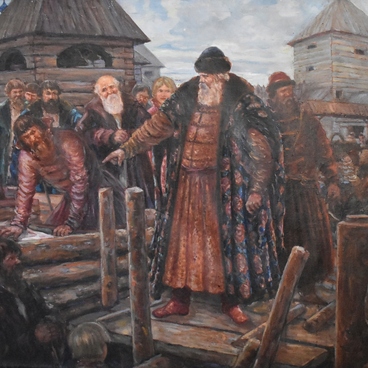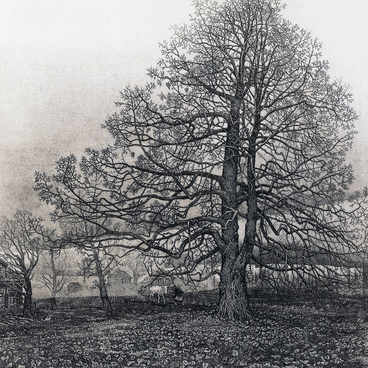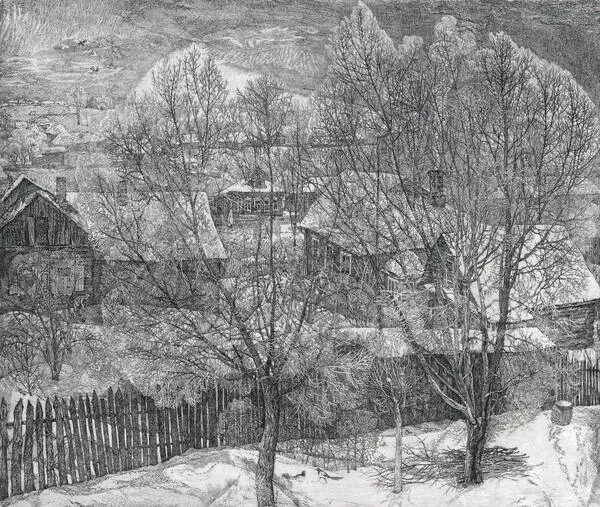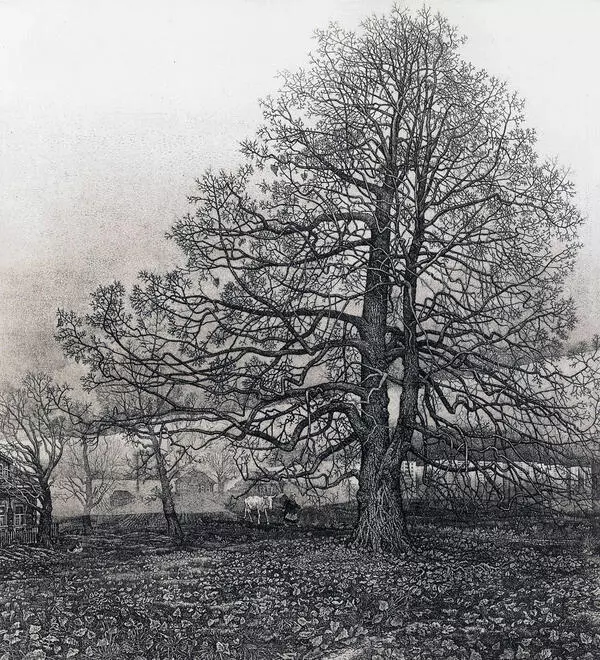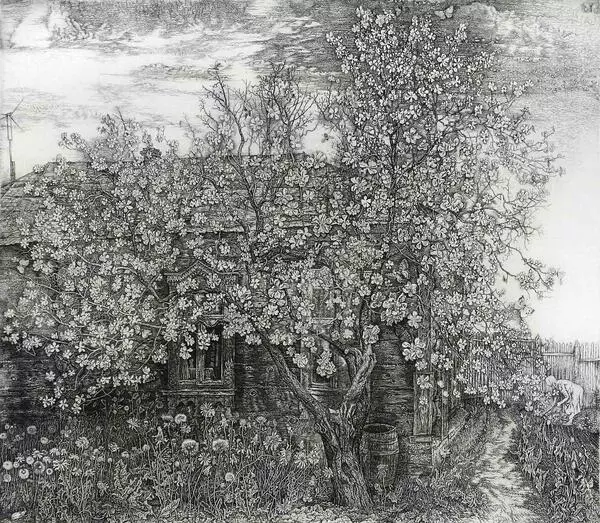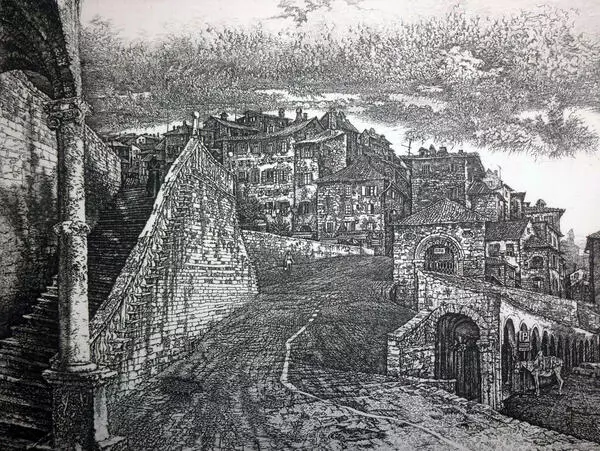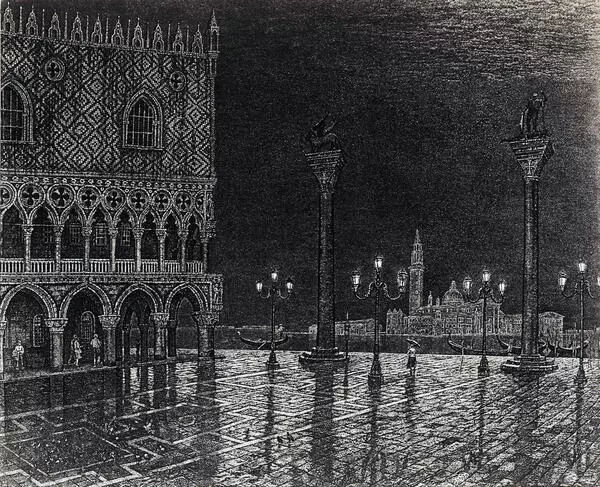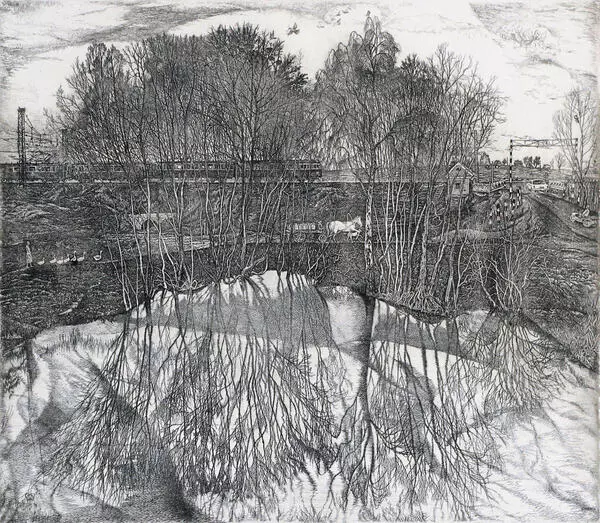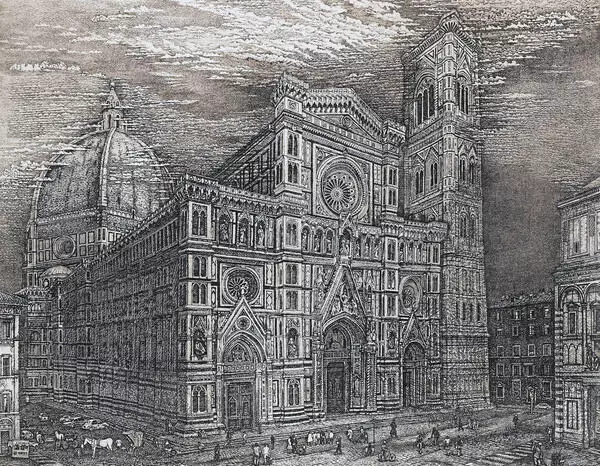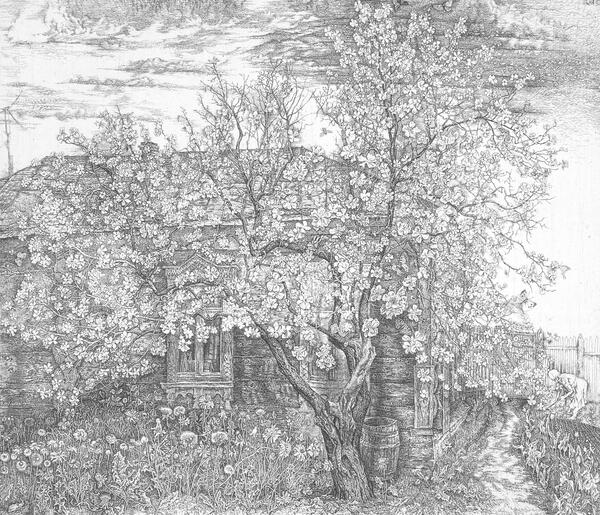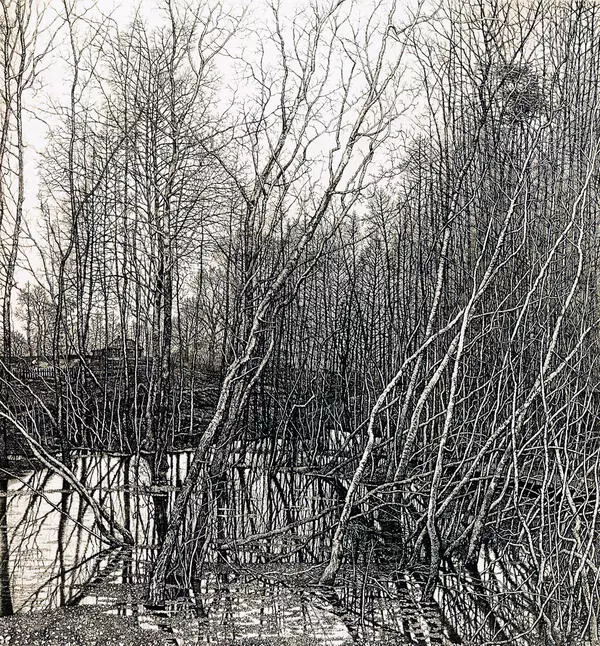Stanislav Mikhailovich Nikireev was an outstanding master of etching.
The etching technique has a long history and is one of the types of engravings. It involves the use of printing plates (wood, metal) and the etching of an image on the surface of these plates. This technique was disseminated in Europe at the turn of the 16th century. Its development was greatly influenced by the increase in the number of printed materials, which resulted from the growth of the number of educated population on the one hand, and technological advances on the other.
Innovative for its time, the printing press, created by Johannes Gutenberg in 1445, served as a tool to create engravings. Many internationally renowned artists worked in etching techniques, such as Albrecht Dürer, Rembrandt Harmenszoon van Rijn, Claude Monet and others. The technique of engraving developed with each passing century.
In the 17th century, colored engravings became popular. New methods of engraving emerged, for example at the turn of the 20th century the linocut — the print made on linoleum — gained popularity. Stanislav Mikhailovich Nikireev also made a significant contribution to the technique, working as an etching artist. He did not simply reproduce the old masters, but was able to add much of himself, both artistically (pictures of nature, people, animals and other objects intertwined in the subject) and technically (the highly detailed work showing his style).
Nikireev’s work “Drip of Thawing Snow” impresses with its execution. This etching reflects the main motifs characteristic of the artist’s creative manner — the outskirts of Russian provincial towns and the original beauty of nature of Central Russia. By bringing in a man and a dog to the silver patterns of his landscape the artist breathes real life in it. In the background of the painting one can see a church peeking out from behind the trees.
In the lower right-hand corner is the artist’s signature in the form of a moth. It appears on practically all the master’s works starting in the second half of the 1970s.
The etching technique has a long history and is one of the types of engravings. It involves the use of printing plates (wood, metal) and the etching of an image on the surface of these plates. This technique was disseminated in Europe at the turn of the 16th century. Its development was greatly influenced by the increase in the number of printed materials, which resulted from the growth of the number of educated population on the one hand, and technological advances on the other.
Innovative for its time, the printing press, created by Johannes Gutenberg in 1445, served as a tool to create engravings. Many internationally renowned artists worked in etching techniques, such as Albrecht Dürer, Rembrandt Harmenszoon van Rijn, Claude Monet and others. The technique of engraving developed with each passing century.
In the 17th century, colored engravings became popular. New methods of engraving emerged, for example at the turn of the 20th century the linocut — the print made on linoleum — gained popularity. Stanislav Mikhailovich Nikireev also made a significant contribution to the technique, working as an etching artist. He did not simply reproduce the old masters, but was able to add much of himself, both artistically (pictures of nature, people, animals and other objects intertwined in the subject) and technically (the highly detailed work showing his style).
Nikireev’s work “Drip of Thawing Snow” impresses with its execution. This etching reflects the main motifs characteristic of the artist’s creative manner — the outskirts of Russian provincial towns and the original beauty of nature of Central Russia. By bringing in a man and a dog to the silver patterns of his landscape the artist breathes real life in it. In the background of the painting one can see a church peeking out from behind the trees.
In the lower right-hand corner is the artist’s signature in the form of a moth. It appears on practically all the master’s works starting in the second half of the 1970s.

